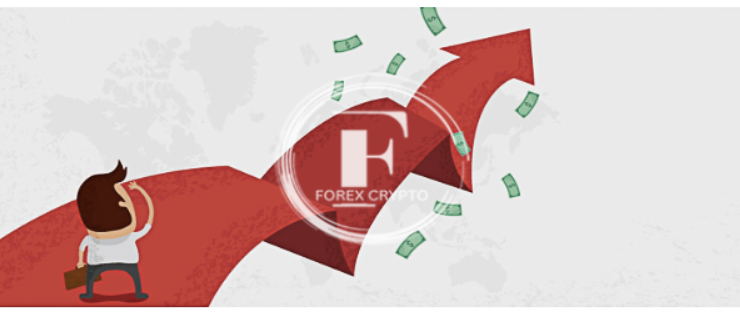The Stock Is Overpriced
It’s common knowledge that the stock market is a very unpredictable environment, Many investors are left questioning whether or not they are purchasing stocks at a reasonable price after the stock market has had a number of crashes and corrections over the years, Therefore, how can you determine whether or not the price of a stock is excessive?
There are a number of factors you can look at when trying to determine if a stock is overpriced, The first is the price-to-earnings ratio or P/E ratio, This is a simple ratio that is calculated by dividing the price of the stock by the company’s earnings per share, A high P/E ratio could be a sign that the stock is overpriced, Another factor to consider is the price-to-sales ratio, or P/S ratio,
This ratio is calculated by dividing the price of the stock by the company’s revenue per share, A high P/S ratio could also be a sign that the stock is overpriced, The last factor to consider is the price-to-book ratio, or P/B ratio, This ratio is calculated by dividing the price of the stock by the company’s book value per share, A high P/B ratio could be a sign that
- To begin, a stake in the ownership of a corporation is denoted by the term “stock.”
- When a company goes public, it sells shares to investors in an initial public offering (IPO),
- Following the initial public offering (IPO), the shares will be traded on stock markets.
- The market’s supply and demand are the two primary factors that influence the price of a share.
- The price will increase if there is a greater demand than there is supply.
- If there is a surplus of supply relative to demand, then the price will fall.
- There are a number of ways to determine if a stock is overpriced.
To begin, a stake in the ownership of a corporation is denoted by the term “stock.”
A stake in the ownership of a corporation is referred to as a stock, When you buy a share of a company’s stock, you automatically become a partial owner of that business and are granted the right to a portion of the company’s earnings, if it is successful.
Stocks are traded on stock exchanges, and the prices of stocks fluctuate based on supply and demand, When demand is high and there are more buyers than sellers, the price of the stock goes up.
When demand is low and there are more sellers than buyers, the price of the stock goes down, If you’re thinking about purchasing a stock, you might be wondering if the stock is overpriced, After all, you don’t want to overpay for a stock and then watch it go down in value, There are a few ways to tell if a stock is overpriced,
One way to tell if a stock is overpriced is to look at its price-to-earnings ratio, or P/E ratio, This ratio tells you how much you’re paying for each dollar of earnings for the company, A high P/E ratio means that you’re paying more for the stock, and thus it might be overpriced,
Another way to tell if a stock is overpriced is to look at its price-to-book ratio, or P/B ratio, This ratio tells you how much you’re paying for each dollar of assets that the company has, A high P/B ratio means that you’re paying more for the stock, and thus it might be overpriced,
You can also look at the overall market conditions to get an idea of whether stocks, in general, are overpriced, If the market is booming and stocks are going up in value, it’s more likely that a stock is overpriced, Conversely, if the market is bearish and stocks are going down in value, it’s less likely that a stock is overpriced,
If you’re thinking about purchasing a stock, it’s important to do your research to make sure you’re not overpaying, Look at the P/E ratio, P/B ratio, and overall market conditions to get an idea of whether the stock is overpriced.

When a company goes public, it sells shares to investors in an initial public offering (IPO)
A company’s IPO is the first time that it sells shares to the public, When a company goes public, it offers shares to investors in an initial public offering (IPO),
The price of the shares is set by the company and the investment bank that is underwriting the IPO, Investors can make money from an IPO in two ways,
The first is by buying the shares at the IPO price and selling them later at a higher price, The second is by buying shares after the IPO when the shares are trading at a higher price.
Initially, Public Offerings (IPOs) are often oversubscribed, which indicates that there is more demand from investors to purchase shares than there are shares now available, This has the potential to push the price of the shares upward.
Some investors think that IPOs are a good way to make money, but others think that they are a bad investment, Before you invest in an IPO, you should do your research to decide if it is a good investment for you.
Following the initial public offering (IPO), the shares will be traded on stock markets
After the IPO, the shares are traded on stock exchanges, While the price of a stock may fluctuate in the days or weeks after going public, a company’s stock price will usually settle into a particular range over time.
If the market perceives that a company’s stock is overpriced, it will be difficult for the stock to sustain a price above that level, Conversely, if the market believes a stock is underpriced, it will be difficult for the stock to stay below that price.
The market’s supply and demand are the two primary factors that influence the price of a share
The market’s supply and demand conditions are ultimately responsible for determining a company’s stock price, The price will increase when there are more buyers than sellers in the market, and The price will fall if more people are selling than there are people buying, The performance of the firm is another factor that determines the pricing.
In the event that the firm is experiencing financial success, the share price may increase, In the event that the firm is not performing well, the share price will decrease, When trying to assess whether or not a company is expensive, investors look at a number of different signs, The price-to-earnings ratio, the price-to-book ratio, and the price-to-sales ratio are examples of some of these metrics.
The price-to-earnings ratio is a measure of how much investors are willing to pay for each dollar of the company’s earnings.
A high ratio means that investors are willing to pay more for the company’s earnings, and a low ratio means that investors are not willing to pay much for the company’s earnings,
The price-to-book ratio is a measure of how much investors are willing to pay for each dollar of the company’s book value,
A high ratio means that investors are willing to pay more for the company’s book value, and a low ratio means that investors are not willing to pay much for the company’s book value, The price-to-sales ratio is a measure of how much investors are willing to pay for each dollar of the company’s sales,
A high ratio means that investors are willing to pay more for the company’s sales, and a low ratio means that investors are not willing to pay much for the company’s sales,
There is no single indicator that will tell you if a stock is overpriced, You need to look at all of the indicators to get a better idea of where the stock is priced.
The price will increase if there is a greater demand than there is supply
When considering if a stock is overpriced, it is important to weigh the demand for the stock against the supply, If there is more demand than there is supply, the price of the stock will go up,
This is due to the basic law of supply and demand- if there is more demand for a product than there is available supply, the price of the product will go up, In order to determine if a stock is overpriced, then, it is important to consider how much demand there is for the stock relative to how much of the stock is available,
If you are trying to determine if a stock is overpriced, there are a few ways to look at demand, One way is to consider the number of people who are interested in buying the stock, If there are more people interested in buying the stock than there are shares available, the price of the stock will go up.
Another way to look at demand is to consider the price that people are willing to pay for the stock, If people are willing to pay more for the stock than the current price, that is an indication that the stock is underpriced and the price will go up, Supply is simply the number of shares available for purchase,
It is important to consider the total number of shares available, not just the number of shares that are currently being traded, If there are more buyers than there are available shares, the price of the stock will go up, It is important to consider both demand and supply when determining if a stock is overpriced, If there is more demand than there is available supply, the price of the stock will go up.
If there is a surplus of supply relative to demand, then the price will fall
If there is more supply of a stock than there is demand, the stock price will drop, This happens because when there is more stock available than investors are willing to buy, the sellers will lower the price in order to find a buyer,
If you’re trying to determine whether a stock is overpriced, you can look at the level of supply and demand in the market, One way to do this is to look at the number of shares that are being traded each day.
If more shares are being traded than usual, it could be an indication that there is more buying or selling pressure in the market and that the price could be affected.
You can also look at the bid-ask spread, which is the difference between the lowest price that a seller is willing to accept and the highest price that a buyer is willing to pay, A wide bid-ask spread can indicate that there is.
There are a number of ways to determine if a stock is overpriced
There are a number of different ways that investors can use to determine whether or not a stock is overpriced, One of the most common methods is to simply compare the current price of the stock to its historical prices.
If the stock is currently trading at a price that is significantly higher than its historical prices, then it is likely that the stock is overpriced, Another way to determine if a stock is overpriced is to look at the company’s financial statements, If the company is not doing well financially, then the stock is likely overpriced,
This is because investors will be willing to pay less for a company that is not doing well, A third way to determine if a stock is overpriced is to compare the stock’s price to the prices of other stocks in the same industry.
If the stock is significantly more expensive than other stocks in the same industry, then it is likely that the stock is overpriced, Finally, investors can use technical analysis to determine if a stock is overpriced.
Technical analysis is a method of analyzing stock prices that looks at past price patterns in order to predict future prices, If the stock’s current price is not in line with its past price patterns, then it is likely that the stock is overpriced.
When analyzing a stock, you want to consider many different factors in order to determine if it is overpriced, These include things like the company’s earnings, revenue, growth rate, valuation, and more,
While there is no one perfect way to know if a stock is overpriced, by considering all of these factors you can get a good idea as to whether or not the stock is priced.




Comments (No)